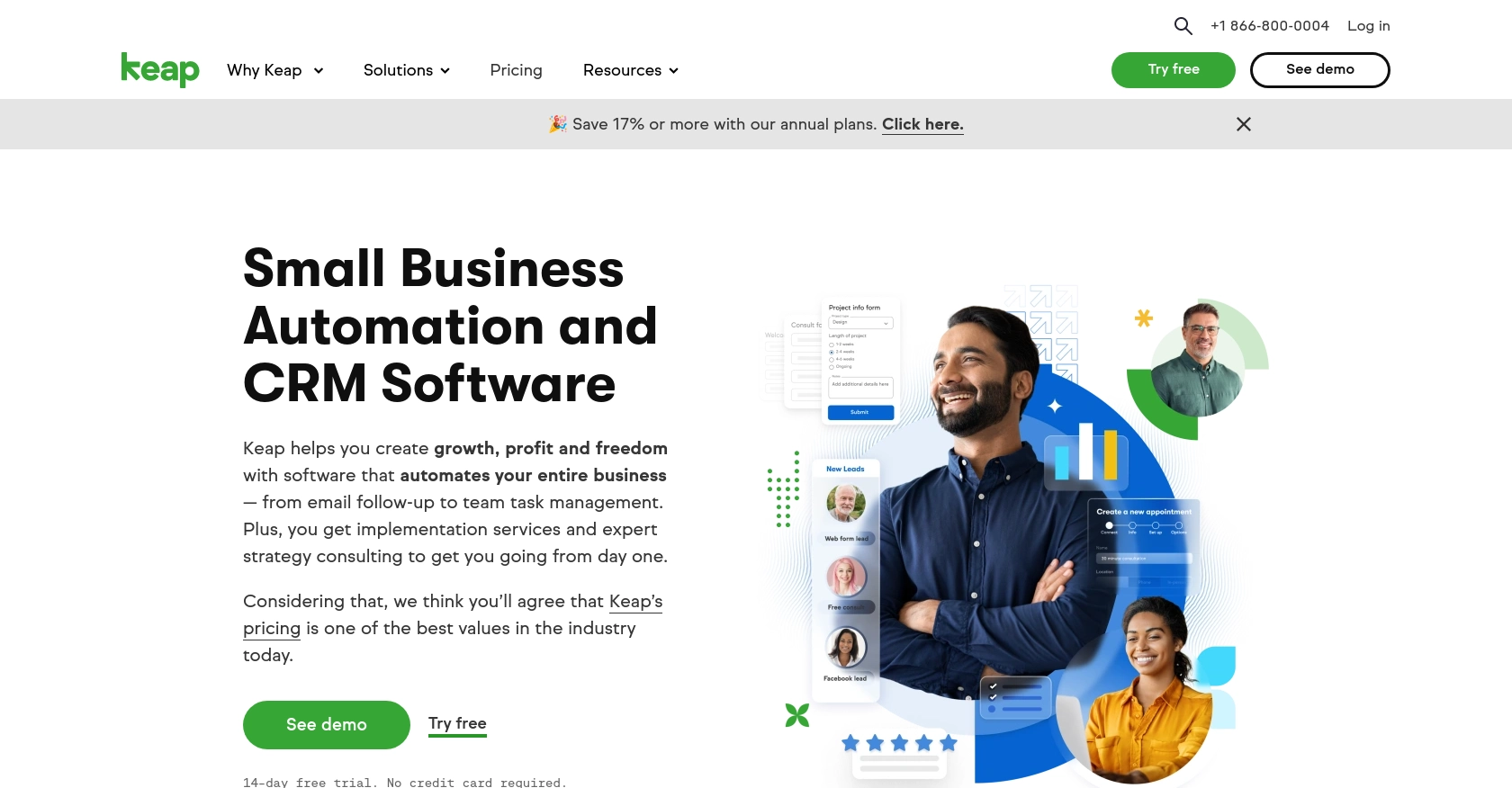How to Get Users with the Keap API in PHP

Introduction to Keap API Integration
Keap, formerly known as Infusionsoft, is a robust CRM and marketing automation platform tailored for small businesses. It offers a suite of tools to manage customer relationships, automate marketing campaigns, and streamline business operations.
Developers may find it beneficial to integrate with Keap's API to access and manage user data, automate workflows, and enhance customer engagement. For example, you might want to retrieve user information to personalize marketing messages or synchronize user data with other business applications.
Setting Up Your Keap Developer Account and Sandbox Environment
Before you can start integrating with the Keap API, you'll need to set up a developer account and create a sandbox environment. This will allow you to test your API calls without affecting live data.
Registering for a Keap Developer Account
To begin, you'll need to register for a Keap developer account. This account will give you access to the necessary tools and resources to build and test your integration.
- Visit the Keap Developer Portal.
- Click on "Register" to create a new developer account.
- Fill in the required details and submit the registration form.
- Once registered, log in to your developer account to access the dashboard.
Creating a Keap Sandbox App
With your developer account set up, the next step is to create a sandbox app. This app will serve as your testing environment for making API calls.
- Navigate to the "Sandbox" section in your developer dashboard.
- Click on "Create Sandbox App" and provide the necessary information.
- Once created, you'll receive a client ID and client secret, which are essential for authenticating your API requests.
Setting Up OAuth Authentication for Keap API
The Keap API uses OAuth 2.0 for authentication. Follow these steps to set up OAuth for your sandbox app:
- In your sandbox app settings, navigate to the "OAuth" section.
- Enter the redirect URI where users will be redirected after authentication.
- Save the changes to generate your OAuth credentials.
- Use the client ID and client secret obtained earlier to authenticate your API requests.
For more detailed information, refer to the Keap REST API documentation.

sbb-itb-96038d7
Making API Calls to Retrieve Users with Keap API in PHP
To interact with the Keap API using PHP, you'll need to ensure you have the correct environment set up. This section will guide you through the necessary steps to make a successful API call to retrieve user data from Keap.
Setting Up Your PHP Environment for Keap API Integration
Before making API calls, ensure your PHP environment is ready:
- Install PHP 7.4 or later on your machine.
- Ensure the
cURLextension is enabled in your PHP configuration, as it will be used to make HTTP requests. - Use Composer to manage dependencies, if needed.
Installing Required PHP Libraries for Keap API
To interact with the Keap API, you'll need the guzzlehttp/guzzle library, which simplifies HTTP requests in PHP. Install it using Composer:
composer require guzzlehttp/guzzle
Example Code to Retrieve Users from Keap API
Below is a sample PHP script to retrieve users from the Keap API:
require 'vendor/autoload.php';
use GuzzleHttp\Client;
$client = new Client();
$accessToken = 'Your_Access_Token'; // Replace with your OAuth access token
try {
$response = $client->request('GET', 'https://api.infusionsoft.com/crm/rest/v1/users', [
'headers' => [
'Authorization' => 'Bearer ' . $accessToken,
'Accept' => 'application/json',
],
]);
$data = json_decode($response->getBody(), true);
foreach ($data['users'] as $user) {
echo 'User ID: ' . $user['id'] . "\n";
echo 'Name: ' . $user['name'] . "\n";
echo 'Email: ' . $user['email'] . "\n\n";
}
} catch (Exception $e) {
echo 'Error: ' . $e->getMessage();
}
Replace Your_Access_Token with the OAuth access token you obtained during the authentication setup.
Verifying API Call Success in Keap Sandbox
After running the script, verify the retrieved user data by checking the Keap sandbox environment. The output should match the users available in your sandbox.
Handling Errors and Common Error Codes in Keap API
When making API calls, handle potential errors gracefully. Common error codes include:
- 401 Unauthorized: Check if your access token is valid and not expired.
- 403 Forbidden: Ensure your app has the necessary permissions.
- 404 Not Found: Verify the endpoint URL is correct.
Refer to the Keap REST API documentation for more details on error handling.
Conclusion and Best Practices for Keap API Integration in PHP
Integrating with the Keap API using PHP allows developers to efficiently manage user data and automate workflows, enhancing overall business operations. By following the steps outlined in this guide, you can successfully retrieve user information and ensure seamless interaction with Keap's platform.
Best Practices for Secure and Efficient Keap API Usage
- Securely Store Credentials: Always store your OAuth credentials, such as the client ID and client secret, securely. Consider using environment variables or secure vaults to protect sensitive information.
- Handle Rate Limiting: Be aware of Keap's API rate limits to avoid throttling. Implement retry logic with exponential backoff to handle rate limit responses gracefully.
- Data Transformation and Standardization: Ensure that the data retrieved from Keap is transformed and standardized to fit your application's data model. This will help maintain consistency and improve data quality.
Streamlining Integrations with Endgrate
While integrating with the Keap API can be straightforward, managing multiple integrations can become complex and time-consuming. Endgrate offers a unified API solution that simplifies the integration process across various platforms, including Keap.
By leveraging Endgrate, you can focus on your core product development while outsourcing the integration complexities. This approach not only saves time and resources but also provides a seamless integration experience for your customers.
Explore how Endgrate can enhance your integration strategy by visiting Endgrate's website and discover the benefits of a unified API solution.
Read More
Ready to get started?
